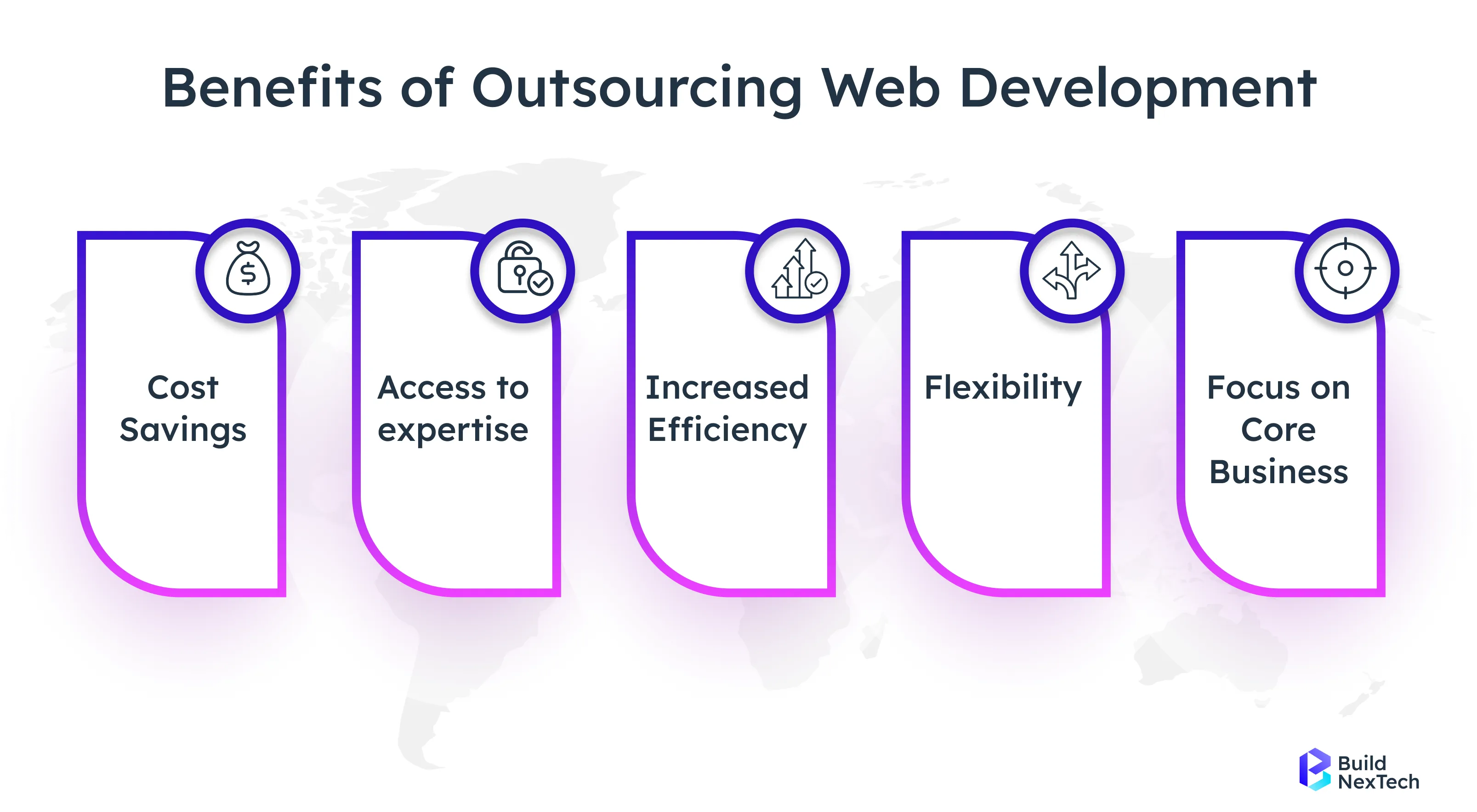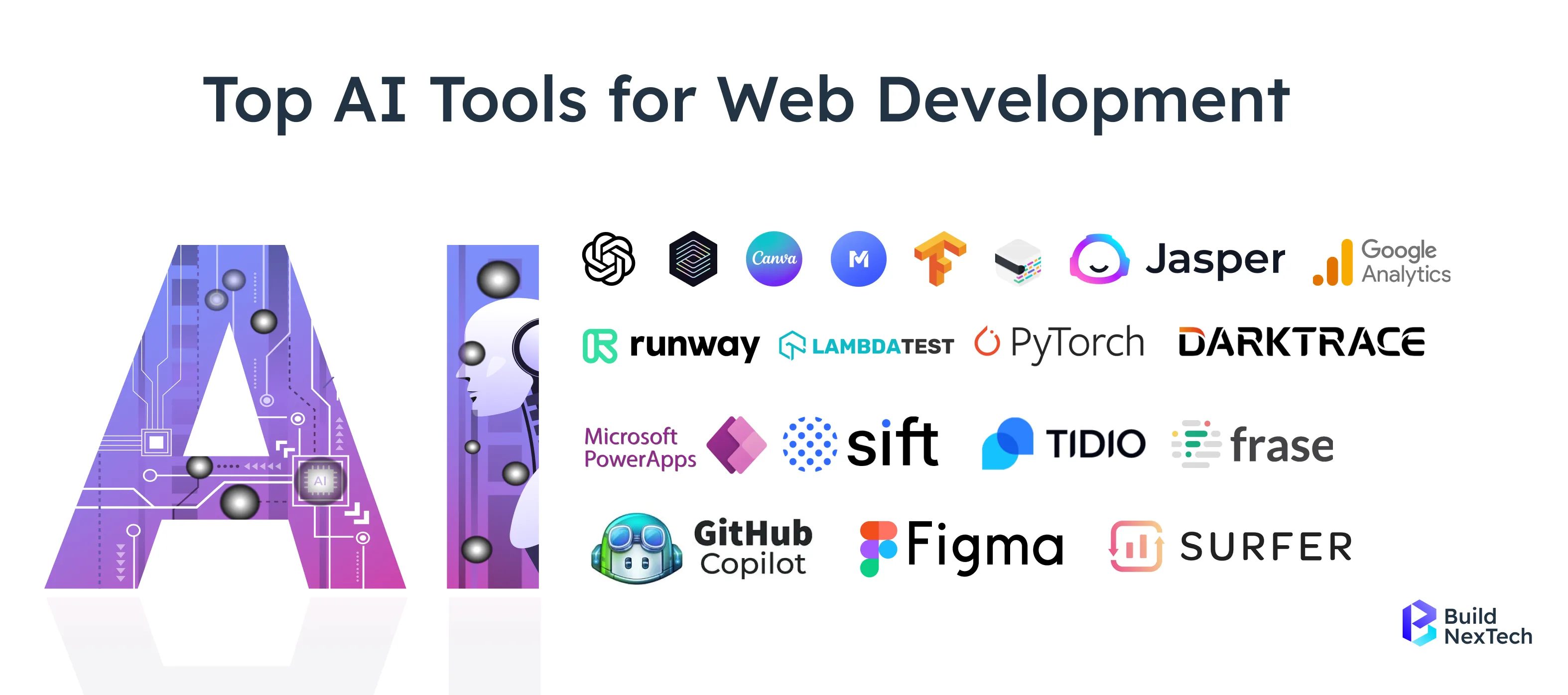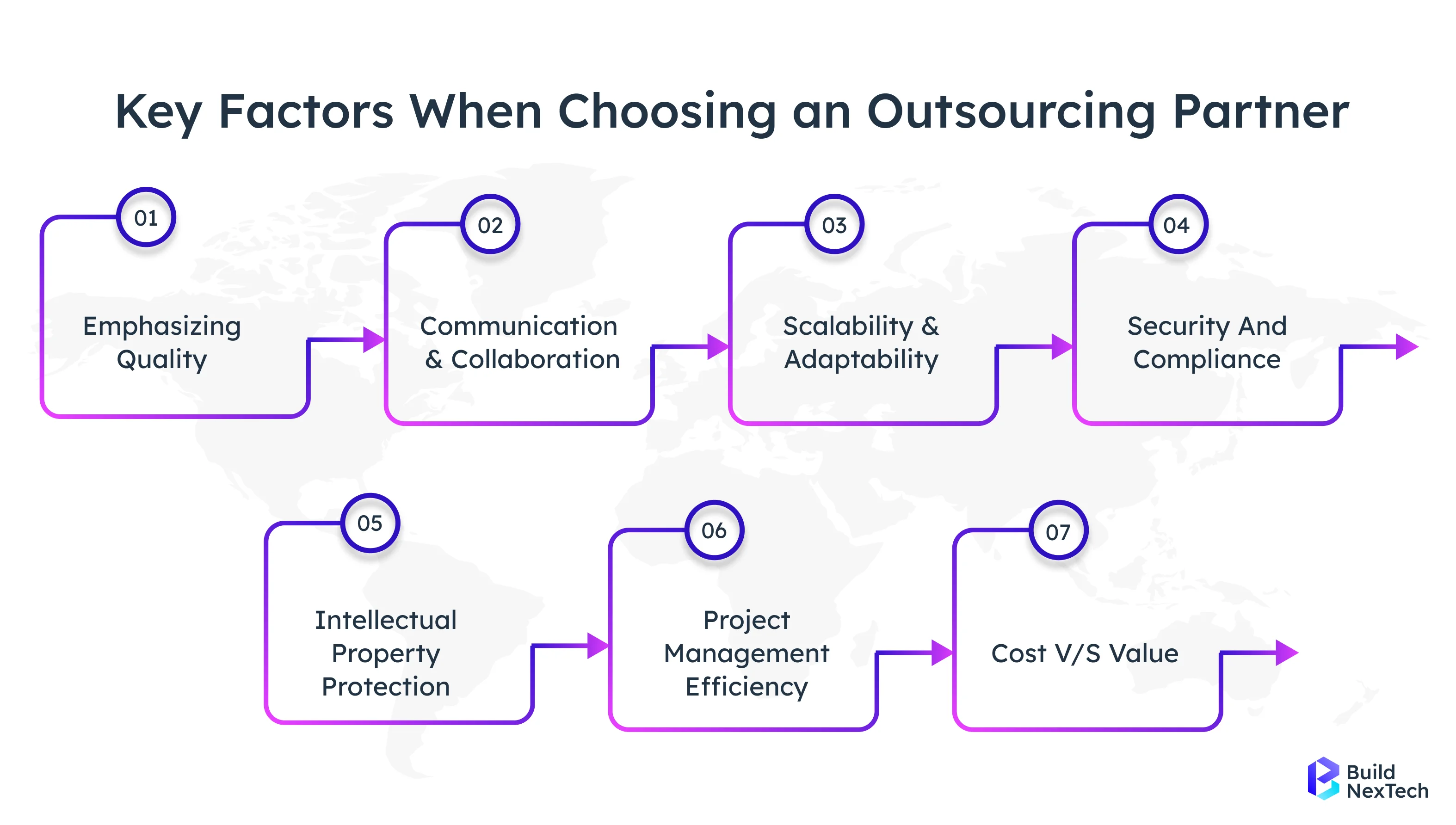In 2025, web development is no longer just about building static websites or adding a company portfolio online. This serves as a modern web development intro, highlighting how the outsourcing landscape has matured from static websites to intelligent, automated ecosystems.
The role of outsourced web development has evolved into a strategic enabler of digital transformation, AI-driven innovation, and scalable cloud-native applications.
👉 Many businesses begin their journey with a simple web design development project or even a basic website development process, but today, outsourcing covers the entire lifecycle from concept to deployment.
Businesses now demand solutions that are:
- Scalable - to handle growing traffic and user bases
- Secure - with data protection and compliance at the core
- Flexible - adaptable to fast-changing business needs
- Cloud-ready - built for multi-cloud and hybrid deployments
This shift means outsourcing is no longer just a cost-saving measure; it’s a growth strategy. Companies partner with specialized web development agencies and outsourcing firms to leverage expertise in AI-powered development, no-code platforms, full-stack engineering, and advanced cybersecurity practices.
As organizations compete in digital-first economies, outsource web development offers them the speed, skills, and scalability they need to stay ahead.
Title: Benefits of Outsourcing Web Development

Why Outsourced Web Development Still Matters in 2025
Global demand for digital transformation projects
Digital transformation is now deeply tied to web applications development, where cross-platform compatibility and API-first architectures define scalability.
- Progressive web apps (PWAs)
- Cloud-native applications
- Cross-platform mobile app development
- Integrated AI-powered workflows
👉 This shift reflects the rapid evolution of web technologies and how they underpin modern development application web solutions.
According to Gartner, global IT spending will reach $5.1 trillion in 2025, with a significant portion flowing into outsourcing software development services, cloud computing, and mobile application development.
For businesses, this means accelerating project delivery without inflating in-house costs. By outsourcing, they tap into global talent pools, proven software development life cycle (SDLC) methodologies, and pre-built accelerators that ensure speed, compliance, and quality.
Shifting from cost-cutting to strategic growth
A decade ago, outsourcing was largely synonymous with low-cost app development. But in 2025, it’s about innovation, scalability, and rapid deployment.
- Fintech: Outsourced teams develop real-time, regulation-compliant applications that handle millions of secure digital transactions daily.
- Healthcare: HIPAA-compliant telemedicine platforms are being developed and launched faster than ever before with specialized outsourcing partners.
- Retail & eCommerce: Outsourced developers are powering AI-driven personalization engines and affordable app development initiatives that help brands scale digital engagement cost-effectively.
Outsourcing has moved from being a cost-reduction strategy to a value-creation model, where innovation and speed-to-market are the biggest drivers.
Regional hotspots for outsourcing
Global outsourcing hubs remain strong in 2025, with India, Eastern Europe, and Latin America leading the way. These regions provide:
- A large talent pool of skilled software developers
- Expertise in low-code and no-code platforms alongside traditional stacks
- Competitive pricing models
For US-based clients, collaborating with hybrid teams that include a mobile app development firm ensures faster go-to-market timelines and unified web-app ecosystems.
For US-based companies, the hybrid approach is becoming the gold standard. For example, BuildNexTech in Massachusetts blends local client engagement with offshore execution, giving businesses the dual benefit of trust and affordability.
The Rise of AI in Web Development Outsourcing
AI-assisted coding and automation
In 2025, AI tools will have become core to the software development workflow. Tools like GitHub Copilot, Tabnine, AWS CodeWhisperer, and ChatGPT are now everyday companions for developers.
👉 While an AI developer or teams developing AI models once sounded niche, today almost every outsourcing partner uses AI dev tools to unlock full AI potential in projects.
These tools:
- Generate boilerplate code instantly
- Suggest smarter, cleaner solutions
- Reduce errors by catching syntax and logic issues
- Automate repetitive coding tasks
The result? Shorter development cycles, fewer bugs, and faster product launches.
These tools not only simplify coding but also accelerate AI development by integrating machine learning and automation within core software pipelines.
AI tools transforming outsourcing
AI in outsourcing goes far beyond just code completion; it’s reshaping the entire software development lifecycle (SDLC). Modern Software Development agencies are integrating AI at every stage of delivery to reduce costs, accelerate timelines, and boost reliability.
Here are some practical applications and the tools powering them:
- Prototyping & Wireframing
Tools like Uizard, Galileo AI, and Figma AI plugins allow designers and developers to create MVPs and clickable prototypes in hours instead of weeks.
👉 This is also where top no code tools and top no code platforms like Bubble, Retool, and OutSystems complement Wrb development partners.
- Debugging & Vulnerability Testing
AI-driven platforms such as Snyk, DeepCode (by Snyk), and SonarLint automatically scan for vulnerabilities, outdated dependencies, and insecure coding practices. This ensures outsourced applications meet strict compliance and security standards.
At BuildNexTech, we simplify what is no code development for our clients by demonstrating how platforms like nocode Bubble can accelerate MVP launches while maintaining enterprise-grade security. y.
- Smart Documentation & Knowledge Transfer
Documentation is no longer a manual burden. Mintlify, Swimm, and CodiumAI generate human-readable documentation and in-line explanations, making it easier for outsourcing teams to collaborate across geographies. - Automated QA & Testing
Tools like Testim, Mabl, and Functionize leverage machine learning to create adaptive test cases that evolve with the application. For outsourced QA, this ensures fewer false positives and reduced maintenance effort. - Project Management & Delivery Tracking
AI-powered PM assistants such as ClickUp AI, Asana Intelligence, and Jira AI analyze project risks, optimize sprints, and predict delivery delays before they occur, making client communication more transparent. - Code Review & Quality Gates
Platforms like Codacy and CodeClimate use AI to enforce coding standards, monitor technical debt, and suggest performance improvements. Outsourced teams use these tools to maintain consistent quality across distributed teams. - AI Pair Programming & Collaboration
Beyond Copilot and Tabnine, tools like Replit Ghostwriter and Amazon Q Developer are enabling real-time collaboration, allowing junior and senior developers in outsourcing firms to code together more effectively.
For generative AI development company, AI adoption is no longer optional; it’s a competitive differentiator. Those who integrate these tools can deliver faster, more secure, and higher-quality solutions, making them the preferred partners for global businesses in 2025.
As a result, development software today is not just about code editors; it’s an ecosystem of AI-assisted automation tools redefining how outsourced teams build and deliver applications.

How No-Code and Low-Code Are Changing Outsourcing Models
Business teams as co-creators
No-code platforms like Bubble, Webflow, Retool, and OutSystems empower business teams often called citizen developers, to create apps without writing complex code.
Examples include:
- Marketing teams launching chatbots and landing pages
- HR departments creating internal workflow automation tools
- Sales teams using no-code dashboards for customer tracking
This reduces dependency on outsourced developers for smaller tasks, while allowing them to focus on high-value, custom development projects.
The Rise of Hybrid Outsourcing Models
Outsourcing is no longer a binary choice. Many web development companies now combine:
- No-code for MVPs and prototypes
- Custom development for scalability and performance
This hybrid approach allows businesses to launch fast, validate ideas, and then scale with robust custom software. Modern SAP low code no code platforms are also contributing to this evolution by enabling faster enterprise integrations and workflow automation.
Risks of over-reliance on no-code
While powerful, no-code platforms carry risks:
- Vendor lock-in - dependence on proprietary ecosystems
- Scalability issues - limited performance for complex apps
- Security concerns - especially in multi-tenant cloud environments
That’s why businesses still rely on outsourcing partners to build long-term, scalable, and secure systems that go beyond no-code limits.
Choosing the Right Outsourced Web Development Partner
While selecting a web development company or website development service, businesses should also confirm whether the partner positions itself as an outsourcing software development company or focuses narrowly on a single outsourcing website model. The broader the expertise, the stronger the long-term collaboration.
Evaluating expertise beyond cost savings
The cheapest outsourcing partner is rarely the best. Businesses should evaluate partners based on:
- Case studies & references
- Proven success in custom software development
- Mature development processes (Agile, DevOps, CI/CD)
- Retention rates and long-term client relationships
Importance of physical presence and trust signals
Trust is key in outsourcing partnerships. Companies value partners with:
- Local offices for face-to-face collaboration
- Global delivery centers for scalability
- Certifications and industry recognition to validate credibility
This dual presence ensures businesses get both cost efficiency and trustworthy collaboration.

Future Trends Reshaping Outsourced Development Partnerships
From staff augmentation to outcome-based contracts
Traditional models paid outsourced developers by the hour. In 2025, clients are shifting toward outcome-based contracts where payment is tied to deliverables, KPIs, and business impact.
This ensures:
- Higher accountability from outsourcing partners
- Predictable ROI for clients
- Long-term, value-driven relationships
Cloud-native and multi-cloud outsourcing strategies
As businesses embrace multi-cloud infrastructures (AWS, Azure, GCP), outsourcing partners are becoming cloud migration specialists.
For instance, BuildNexTech integrates Generative AI into cloud migration projects, helping clients optimize costs, improve governance, and ensure compliance during migration.
Cybersecurity and compliance as differentiators
In 2025, cybersecurity is no longer optional; it’s a deal breaker. Businesses demand Web development partners that can deliver:
- ISO/IEC 27001:2022 certifications
- GDPR, HIPAA, and SOC2 compliance
- Proactive threat monitoring
Firms that prioritize compliance and trust will win long-term partnerships.
Conclusion
The future of outsourced web development goes beyond cost-cutting it’s now centered on strategic growth, innovation, and long-term value. In 2025, businesses seek outsourcing software development companies that deliver more than code: AI-powered workflows, no-code agility, and secure, scalable solutions built on proven software development processes.
AI tools are reshaping the entire development process from prototyping to QA, while low-code and no-code platforms empower teams to co-create alongside expert outsourcing developers. This combination enables faster MVP launches, smarter applications, and better user experiences.
At BuildNexTech in Boston, we help companies achieve this balance. As a custom web development services and generative AI development company, we specialize in web and app development, AI models, and secure cloud-native solutions. Our global team of software developers ensures every project is delivered with speed, security, and precision.
👉 Looking for a strategic partner in outsourcing? Let’s build smarter, together.
People Also Ask
Is outsourcing web development still cost-effective in 2025?
Yes. Outsourcing web development saves 30-40% compared to in-house teams while giving access to skilled software developers worldwide. Using proven SDLC methodologies, outsourcing software development companies deliver projects faster, more reliably, and at scale.
How is AI impacting outsourced web projects?
AI accelerates the website development process through automation. Tools like GitHub Copilot, AWS CodeWhisperer, and Testim enhance productivity, improve QA testing, debugging, and security. Modern AI developers and generative AI development companies use these solutions to deliver smarter, safer applications.
Are no-code tools replacing outsourced developers?
No. Platforms like Bubble, Webflow, and Retool make no code development faster for MVPs, but complex systems still need custom web development services. Experienced outsourced developers ensure scalability, security, and seamless integration within the full software development process.
What are the biggest outsourcing risks today?
Common challenges include vendor lock-in, hidden costs, and compliance gaps. Data security remains a top concern for regulated industries. Partnering with a certified web development company that follows strict governance standards minimizes these risks.


























.webp)
.webp)
.webp)

